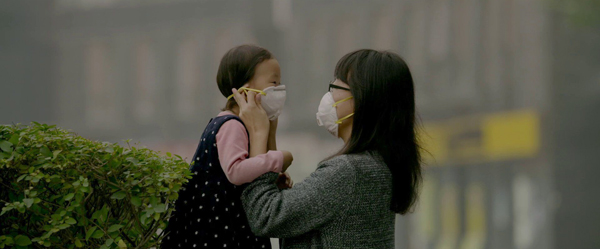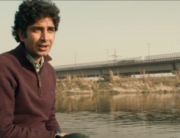In the growing list of films with urgent warnings about global warming, director Charles Ferguson’s Time to Choose has chosen not to focus on the devastating consequences awaiting us. Instead, he points toward a pathway of recovery, highlighting the tremendous strides that have already been made toward ending our dependency on fossil fuels.
The documentary stresses how harnessing the power of wind and the sun has become more cost-effective than oil, coal, or natural gas, and is realizing exponential growth worldwide as an industry. Meanwhile, batteries for electric cars are dropping in price, provide equal or better power than gasoline or diesel, and get better mileage from a single charge. In addition, innovative city planning is leading to increased use of more energy efficient forms of public transportation.
So, if the technology and financial incentive for clean and sustainable sources of energy are already in place, the film asks: Why are we still drilling, fracking, and mining? Blame it on those it deems the Energy Barons. According to Ferguson, their dominance and corruption keeps entire populations trapped in poverty all over the world.
The film exposes the human toll taken by the coal mining industry, specifically in West Virginia and China. Ferguson, who directed the documentaries No End in Sight and Inside Job in 2007 and 2010, respectively, then takes us to oil-rich Nigeria, where millions still live without electricity. It also explores the surprising link between the fossil fuel industry and industrialized agriculture, which is driving widespread deforestation. A massive forest in Indonesia, vitally important to the world environment, is supposedly protected by the Indonesian government, yet it is being systematically destroyed to supply the palm oil industry.
But it’s not all gloom and doom. Ferguson takes us to India and Africa, where small, affordable solar panels are being installed on shanty roofs to provide a free source of electricity to those who’ve never had it. He points out how new architectural designs are reducing the dependency on artificial lighting. And through an interview with an organic farmer, he highlights how creative use of beneficial plants eliminates the need for herbicides and pesticides, resulting in high yields of healthy fruits and vegetables.
In the end, the film places the responsibility to solve the global warming crisis squarely in the audience’s lap. We can choose, it argues, to stop lining the pockets of the Energy Barons by supporting the use of clean energy sources, buying hybrid vehicles or using public transportation, refusing to buy processed foods, and eating less meat and more organically grown produce. These are solutions we already know. However, despite Ferguson’s optimistic approach and powerful imagery, he fails to address one very important aspect of the viewer’s ability to make the choice: cost. Although the prices of the film’s solutions may have fallen dramatically for commercial purposes, for individuals of either average or less than average means, green energy, hybrid vehicles, and organic foods are not yet affordable.
Still, this is a film well worth seeing for its global perspective on the fossil fuel industry. It is bound to leave many wondering how those with an incentive to keep oil, coal, and natural gas as the dominant fuel sources will pervert the eventual transition to clean and renewable energy. For others, it may just make them rethink some of their everyday decisions.







Leave A Comment